- Travel Tips
- Inspiration
- With Friends
- SHARE YOUR CHALLENGE


10 lessons from Buddhism to guide you when you travel
You don’t need to be a buddhist to borrow some spiritual wisdom and integrate it into your (traveler’s) life..
As traveling itself is one of the best ways to learn and become a better version of yourself, a Buddhist mentality can only add to the experience.
Here are 10 Buddhist beliefs that you can use while you’re traveling to feel calmer in the face of difficulties, immerse yourself in your journey and simply feel happier on the road.
1. Live fully in the now
It’s no surprise there’s so much fuss about mindfulness and meditation nowadays. In this high-tech age, our minds are constantly bombarded with flashes of information, social media updates and seemingly endless cat videos, making it almost impossible to stay anchored to the present moment. Buddhists believe that neither reminiscing about the past nor dreaming of the future will make you happy; the right way is to fully savor the present.
On the road: While traveling, take time to stop and try to remember smells, notice shapes and colors, and – perhaps most importantly – don’t scroll through your phone while eating. It’s a reminder to taste every bite of food and immerse yourself full in every moment while you’re traveling. By the way, this is something you could incorporate in your everyday life too.
2. Learn to let go
“You only lose what you cling to,” said the Buddha. If you don’t try to possess a thing, you cannot lose it and it makes it forever yours. To let go is an art that will improve your whole life, whether it be with relationships, friends, possessions or jobs.
On the road: Embrace minimalism and learn to pack only the basics ( here’s how to do it ). We don’t encourage you to voluntarily let go of your wallet, but if it happens to get stolen, it’s no use making a drama out of it – that won’t help you. Just move on and accept your new conditions.

3. Empty your mind of expectations
There’s a famous Zen story that explains this best:
A university professor once visited a Zen teacher in search of more information about Buddhism. The teacher offered him a cup of tea, which the professor willingly accepted. Then the teacher started pouring tea in the cup, continuing to pour even after the tea started overflowing. “Why don’t you stop when the tea is overflowing?” the professor asked, worried. The teacher answered: “Your mind is just like this cup – overflowing with your expectations and opinions. I can’t give you any new information until you don’t come with an empty cup.”
On the road: Don’t believe what others say about the Russians, the Chinese or the South Africans, for example. Go and see these places for yourself and make up your own mind. The moment you cross a border, forget all your preconceived notions about the country and enter with an empty cup.
4. Don’t label things as “good” or “bad”
One of the basic pillars of Buddhism is non-judgement. You usually tend to qualify events as ‘good’ or ‘bad’, but can you remember a moment when something that seemed like the end of the world turned out to be a great piece of luck? If you maintain a non-judgemental attitude, a potential disaster can turn out to be a blessing in disguise.
On the road: Every time you miss a flight or encounter some other traveler’s ‘misfortune’, just remind yourself that it might turn out to the best part of your trip. Encountering troubles on the road (and finding creative solutions to them) can often lead you to meet great people or regain faith in humanity.
5. Feel and express gratitude
There are hundred of books discussing all the advantages of gratefulness, and we’re going to add to that list by reminding you to take a moment to be grateful for what you have when you’re feeling low.
On the road: The very fact you can afford to travel is reason enough to feel thankful, because millions of people around the world can’t even dream of that luxury for various reasons (poverty, war, political restrictions etc.). Take a minute before going to sleep to feel gratitude for all the amazing things that happened to you during the day.
6. All that we are is the result of what we have thought
How is it possible that John hates Thailand, yet Jack considers it the best place in the world? Did they go to the same country? Of course they did, but John and Jack are different people absorbing different information according to their inner image of the world, and that affects their perceptions.
On the road: If you don’t like a place the first time you visit it, consider what conditions might have created that negative attitude – maybe it was raining or your travel companion was grumpy. Challenge yourself to visit the place again and see if your impression is more positive the second time around.

7. When you share your happiness, it doesn’t decrease
If your happiness is a candle and you share the light with others, your light doesn’t decrease.
On the road: Share happy moments on the road with the local people you meet along the way, as well as friends and family back home. Take the time to send news back home – your loved ones will be happy to know you’re safe and having fun.
8. Everything constantly changes
Impermanence is a core Buddhist concept, one that will help you feel at peace even during the most tense moments on the road. According to the belief, everything comes into being and dissolves – good and bad things alike.
On the road: Once you accept that nothing is eternal, it will be easier to appreciate what you have and to realize that all bad things pass eventually.
9. Get to know yourself
“It is better to conquer yourself than to win a thousand battles.”
On the road: Even though traveling might seem like little more than a leisure activity, it actually changes you in a subtle way, no matter how you travel. Regardless of whether you go on short trips or year-long journeys, you will come back a changed – and in many ways better-rounded – person. We get to know ourselves when we face situations that take us out of our comfort zone.
10. It is better to travel well than to arrive
What matters the most is not the final destination but the journey itself. We’re sure you’ve heard this thousands of times before, and you’ll hear it many more times throughout your travels because it’s true.
On the road: Enjoy every step of the journey. Don’t spend all your time on board a bus or a plane just waiting to arrive. Instead, use the time to talk to people, read with ravenous anticipation about your destination or listen to some local music from the place you’re visiting (which you have downloaded in advance because you already know this music habit will change your trips ).
Pin it for later:

AUTHOR: Maria Angelova
RECOMMENDED FOR YOU
I love it and it’s really an insight to have known this. Thanks 🙏 Budha
Leave a Reply Cancel reply
Your email address will not be published. Required fields are marked *
Save my name, email, and website in this browser for the next time I comment.
Feng Shui Rules for Buddha Locations in Your Home
Sally is a prolific non-fiction and fiction writer, who has appeared in multiple print and digital publications.
Learn about our Editorial Policy .
Placing a Buddha statue in your home can attract positive chi energy . Buddha statues are a popular feng shui item. There are a few hard and fast feng shui rules you want to follow so as not to offend the Buddha. Be sure to follow these instructions and you'll soon reap the blessings of a grateful feng shui Buddha.
Feng Shui Rules for Buddha Placement
Place a Buddha at a height that is at least eye level. Looking down at a deity is considered rude and irreverent. Avoid placing near electrical outlets or equipment with moving parts and motors. This type of activity disturbs the surrounding energy.
- Where to Place Good Luck Elephant Statues in Feng Shui
- Ganesh Statue Meaning and Placement Tips
- Feng Shui Fish Tank Placement and Design
No Buddha in Bathroom, Bedroom or Kitchen
When placing a Buddha statue or any statue of a deity make sure the location is truly one of reverence. This means you should never place a buddha in a bedroom, bathroom or kitchen.
Buddha Facing Front Door
Many feng shui consultants recommend placing the Buddha opposite the main front door of a home on a table that is about 30 inches high. This location allows Buddha to interact with the chi energy entering your home. From this position, the statue can neutralize any negative chi , and transform it from damaging to very lucky energy .
Living Room Buddha
Buddha is also quite comfortable in the living room. The best position for Buddha in the living room is facing the front door.
Buddha on a Student Desk
Students should place Buddha on their desks. This is a perfect location to enlist a little help with lessons and evoke Buddha auspicious energy for fulfilling your academic goals.
Buddha Statue in the Office
For those that own a business, placing Buddha on a reception's desk can help bring prosperity to your company. You can also place Buddha on an office table.
Meditation Garden Buddha
A mediation garden is an ideal area for a Buddha statue. One of the most popular poses is the Meditation Buddha.
Buddha Altar
If you're Buddhist, then you probably already have an altar; just make sure you place this altar in your home where meditation and reflection can be practiced.
Buddha for Yoga Practice
If you practice yoga, then you have a special room or area of a room in your home devote to your exercise. This is an excellent place for a Buddha statue. Just be sure to place it eye level or higher.
Where to Place Laughing Buddha at Home
While feng shui experts may differ on the best location for a Buddha statue, one thing they all agree about is that the laughing Buddha statue makes a wonderful addition to any home! It can be difficult to feng shui your life, but purchasing a laughing Buddha is one of the easier aspects of using this form of interior design. This particular Buddha represents both happiness and wealth. Legend has it that he likes nothing better than coming into your home to smile away all troubles. This Buddha is also nicknamed the happiness Buddha.
Laughing Buddha and Money
Jolly and happy, this particular Buddha is like the Santa Claus of the universe; he's round, content and in feng shui, he comes bearing gifts! The next time you visit a Chinese restaurant, look around; the chances are good that you'll see this happy fellow, smiling contently beside the cash register or a special place overlooking the entrance.
Buddha With Wu Lou
The most popular statue is of the Money Bags Traveling Buddha. Among his valuable possessions as he wanders about the country is a Wu Lou. This hourglass-shaped gourd is the bearer of healing, long life and overall good health. The ideal placement is the east (health) sector. You can also place it in the east to boost the eldest son's all-around luck and prospects.
Buddha With Gold Ingot
This statue is known as the Standing Buddha or Jolly Hotei and is often placed in the north (career) or southeast (wealth) sector . You can also place it in the East sector so you are rich in health luck.
Five Children Climbing on Buddha
This laughing Buddha features five children climbing all over the happy Buddha. This is a favorite for anyone wishing to imbue this love for children and childish play in a specific area of life. An obvious placement is the west (descendent's luck) sector to bring happiness and wealth luck to your children. You can also place this Buddha in the health sector (east) to attract health luck for your family.
Buying a Buddha Statue
When shopping for a Buddha statue , keep the following traits and Chinese lore in mind:
- Bigger is better : It really is better to try to find the biggest Buddha possible. If that isn't possible, a smaller sized one will still work. It just won't have as big of a power bunch.
- Try a laughing Buddha first : There are many Buddhas available, but if this is your first purchase, start with the Laughing Buddha. The Laughing Buddha is also known as the Buddha of Wealth or the Buddha of Happiness. Who wouldn't like a little more of both?
- Look for the symbols : The Laughing Buddha is usually depicted carrying certain items, such as a pot of gold, large ingots or a sack filled with treasures. Other symbols include a "wu lou" (gourd with a red ribbon), a symbol of good health and longevity.
Feng Shui and Buddha Statues
Whenever you place any object in your home for a feng shui symbol or remedy, be sure you use the right element . For example, a metal Buddha placed in the northern sector of your home is typically an outstanding choice for location. The same statue placed in the east sector of your home won't have beneficial results. In fact, metal in a wood element sector can impede your feng shui design since metal cuts wood. Avoid putting a Buddha statue on the floor; this is deemed very disrespectful. If you opt for a Laughing Buddha, don't forget to rub his belly. While this isn't a requirement, many people claim that rubbing Buddha's belly every day (the fatter the belly the better) will bring luck and prosperity to all in the home.
The Buddha’s Travels
To travel (cārikā or saṭcaraṇa) is to go from one place to another, usually over a long distance. The Buddha is thought of as being primarily a teacher and this impression is correct. But he was not a teacher like Plato who taught in an academy or like Aquinas who lectured in a university. All his teaching was done at roadside stops, in mango groves on the outskirts of villages, at wayside shrines and in city parks.
The Buddha was concerned that as many people as possible should have the opportunity to hear his Dhamma and to accomplish this he spent much of his life travelling. The Tipitaka records some of the Buddha’s itineraries. For example, in the 12 months after his enlightenment he went from Uruvela to Sarnath , back to Uruvelā and from there to Rājagaha via Bodh Gaya , a distance of about 315 kilometres. One of the longest journeys mentioned in the Tipitaka has him going from Rajagaha to Savatthi via Vesali and then back to Rājagaha on the alternative route by way of Kīṭāgiri and Āḷavī, about 920 kilometres altogether. His final journey took him from Rājagaha to Pātaḷigāma, Vesāli and eventually to Kusinara , a 275 kilometre trek which must have been strenuous and trying for an 80 year old man (D.II,72-137).
The Buddha is often described as travelling with 500 monks, a conventional number meaning ‘many,’ or simply with ‘a large group of monks.’ At other times, without informing his attendant and companions, he would go off and wander by himself for a while (S.III,95). It seems that he went everywhere by foot except for when he had to cross wide rivers as at Payāga, modern Allahabad (Vin.III,5) and Pāṭaligāma, modern Patna (M.I,225), when he would have taken a ferry. In only one place is he described as wearing sandals, so he probably went barefooted most of the time (Vin.I,187). When on the road he might sleep in a roadside rest house, an old potter’s shed (M.III,238) or, if nothing else was available, out in the open ‘on the leaf strewn ground’ (A.I136). Once when he was in the Kuru country he stayed in a small hut, ‘its floor carpeted with grass’ (M.I,501).
The Buddha once said to his monks, ‘Go forth for the good of the many, for the happiness of the many, out of compassion for the world, for the welfare, the good and the happiness of gods and humans. Teach the Dhamma which is beautiful in the beginning, beautiful in the middle and beautiful in the end. Explain both the letter and the spirit of the holy life, completely fulfilled and perfectly pure’ (Vin.I,20). In saying this the Buddha was expressing his own reason for undertaking the many long and arduous journeys he did, out of compassion for the world.
- Buddhism A to Z . Ven. Dhammika, 2007.
- http://sdhammika.blogspot.com/
- Theravada history
Navigation menu
- About the Blog
- https://www.cambridgeblog.org/free-dating-phone-numbers/
- dating vinyl records
- Cambridge University Press
- Cambridge Core
- Higher Education
- Cambridge Open Engage
Fifteen Eighty Four
Academic perspectives from cambridge university press.
- Quaternary Research
- Anthropology & Archaeology
- Behind the Scenes
- Business & Economics
- Cambridge Now
- Cambridge Reflections: Covid-19
- Climate Change
- Computer Science
- Earth & Life Sciences
- History & Classics
- Into the Intro
- Language & Linguistics
- Law & Government
- Mathematics
- Music, Theatre & Art
- Philosophy & Religion
- Science & Engineering
- Uncategorized
Travel and Transformation: How the Buddhist idea of No-Self shapes Experience and Narrative
John d. barbour.
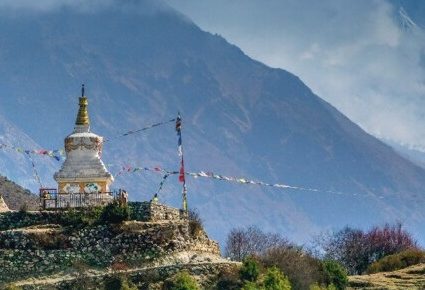
How do Western persons who believe in the reality of the individual self make sense of the Buddhist idea of no-self? How have experiences of travel in Buddhist cultures helped them to do this? How have writers described the ways in which such a journey changed them? These are my guiding questions in Journeys of Transformation: Searching for No-Self in Western Buddhist Travel Narratives .
Since the 1970s, dozens of autobiographical stories have described treks in Tibet, periods of residence in a Zen monastery, pilgrimages to Buddhist sites and teachers, and other Asian journeys. The best known of these works is Peter Matthiessen’s The Snow Leopard , and more than thirty other writers have written of their journeys, including John Blofeld, Jan Van de Wetering, Thomas Merton, Oliver Statler, Robert Thurman, Gretel Ehrlich, and Bill Porter. This genre of spiritual memoir describes how Asian travels brought a new understanding of Buddhism and transformed the author’s life.
Western Buddhist travel narratives often explore the Buddhist idea of no-self or not-self (in Sanskrit: anatman ; in Pali: anatta ), a puzzling concept that apparently denies a foundational assumption of Western culture: the reality of the individual personality or self. In Journeys of Transformation , I interpret how writers understand the Buddhist idea that the self is an illusion. The concept of no-self helps them interpret certain pivotal experiences of “unselfing,” and it is also a catalyst that provokes and enables such events. These incidents dislodge the ordinary and conventional sense of self and elicit another kind of awareness that feels extraordinary, significant, and invigorating, and that writers often link to a transformation of identity. The writers’ search for experiences that they hope will confirm the truths of Buddhism and their focus on incidents of unselfing “off the meditation cushion” during their travels reveal a new understanding of Buddhism as compared with traditional Asian forms. As well as personal change, these travel narratives depict the transformation—the identity-in-difference—of Buddhism as it is reinterpreted in Western cultural settings. Journeys of Transformation explores the geographical journeys and religious changes of both individuals and Buddhism itself.
I explore the meaning of a rather abstract and puzzling concept, the idea of no-self, with close literary analysis of autobiographical narratives, focusing on how Western writers use it to interpret their own experiences. Journeys of Transformation examines a fascinating group of books that have not been discussed together, maps the development of a literary genre, and compares the different ways in which authors portray the central Buddhist concept of no-self and the events that helped them understand it. Autobiographical narratives illuminate certain aspects of Buddhism and religious experience that are obscured or neglected by more abstract, theoretical, or systematic forms of discourse. I offer a fresh perspective on religious transformation, the study of which has been dominated by studies of Christian conversion and by social scientific approaches. The book explores how and why travel can be a crucial catalyst and context for religious experience and change.
Transformation is the central theme of the genre of spiritual autobiography and the deepest religious concern at work in Buddhist thinking about no-self. Journeys of Transformation offers crucial insights and wisdom about the meaning of no-self, the process of self-transformation, the religious significance of travel, and the evolving forms of modern Western Buddhism.
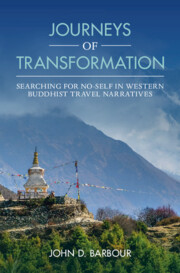
Enjoyed reading this article? Share it today:
About The Author

John D. Barbour is Professor of Religion Emeritus at St. Olaf College in Northfield, Minnesota, where he taught from 1982 to 2018 and served as Martin Marty Chair of Religion and t...
Find more articles like this:
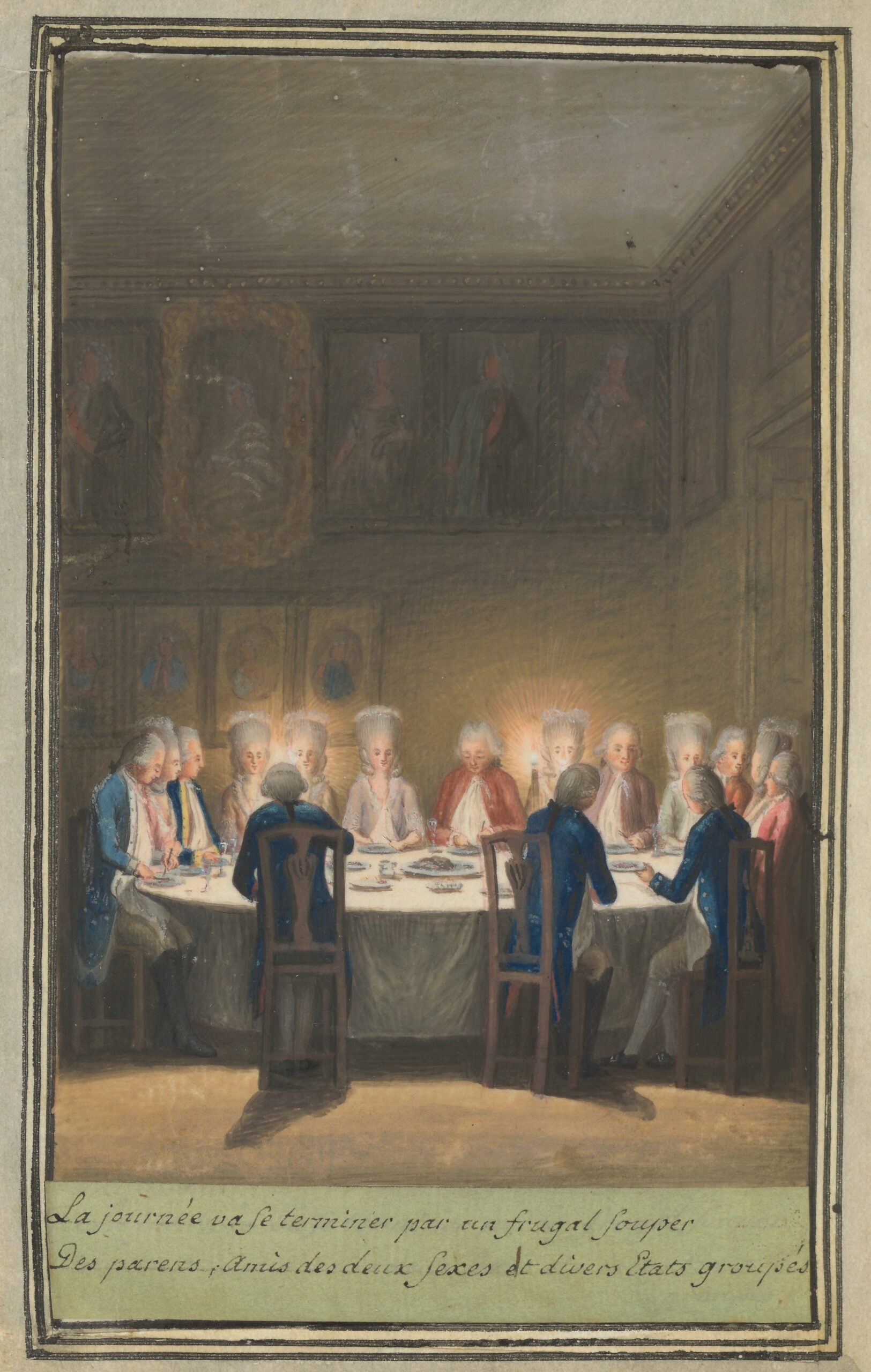
Kant’s Ethics in Historical Context
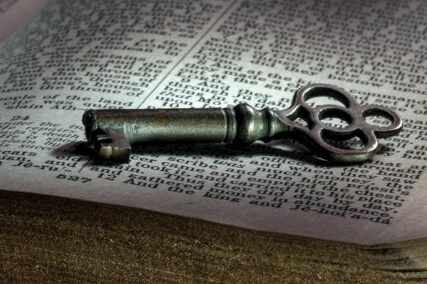
Imagining the Vulnerable Bible
Find a subject, view by year, join the conversation.
Keep up with the latest from Cambridge University Press on our social media accounts.

Latest Comments
Have your say!
- Subscribe Online Courses
Ideas Pilgrimage
Journey to Buddhism’s Four Most Sacred Sites with the New Book Buddhism and Pilgrimage
While travel remains limited for much of the world, author Paolo Coluzzi transports the reader to Lumbini, Bodhgaya, Sarnath, and Kushinagar through his personal stories and historical context.
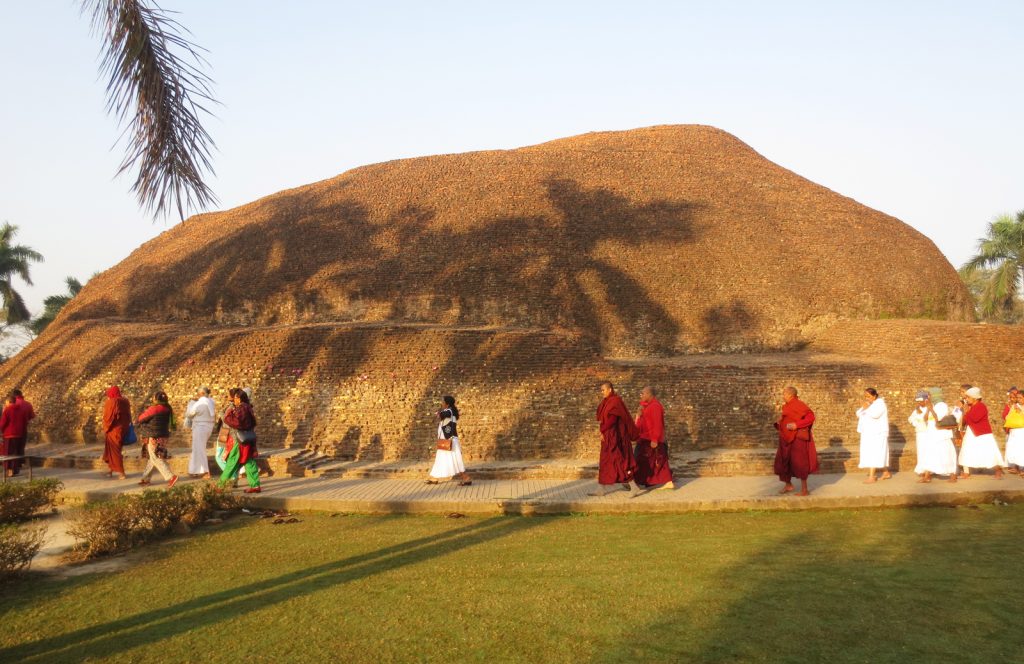
Paolo Coluzzi, author of the recently released Buddhism and Pilgrimage: A Journey to the Four Sites , has been interested in Buddhism since he was 17 years old. Growing up in Italy, he became unsatisfied with aspects of Catholicism at an early age and was immediately drawn to Buddhism after discovering a book by Christmas Humphreys , the founder of the London Buddhist Society, in the library of his secondary school. From there, he read as much as he could on the subject, took up meditation, and explored other traditions, including Hinduism. But it wasn’t until he moved to Brunei to teach and started backpacking around Asia that he reached a deeper level of connection with Buddhism. “Everything changed,” Coluzzi recalled of this time in his life, “because for the first time I could really touch Buddhism.”
Now a professor at the University of Malaya in Kuala Lumpur, Coluzzi recently transformed a manuscript from his travels into the latest installment of Mud Pie Book’s “Buddhism and” series . Buddhism and Pilgrimage , which came out at the beginning of September, focuses on the four sacred sites in Buddhism: Lumbini, where the Buddha was born; Bodhgaya, where the Buddha attained enlightenment; Sarnath, where the Buddha began to teach; and Kushinagar, where the Buddha died. Each chapter begins with an introduction, putting the pilgrimage site in context with a story about the Buddha, and then leads into a journal entry from the author’s travels to the site. Tricycle caught up with Coluzzi to learn more about the writer behind the diary entries and how practitioners can make the most of a time when pilgrimage remains challenging for most.
Why is pilgrimage important to Buddhists and why did you want to write about it? It’s not an obligation. You can be a very good Buddhist without ever traveling to India. But I think in general pilgrimage has been such an important part of the spiritual path because the effort to get there gives you a kind of strength. For me, it gave me so much energy when I was in Bodh Gaya, for example. The meditations I had there were so amazing and so deep. Even now when I feel a little bit down for some reason, one of the ways I cheer myself up is thinking about my travels, especially to India. If you manage to take it easy and just enjoy what you’re experiencing, be open to everything, and not try to be too much in control, it’s an amazing way of traveling.
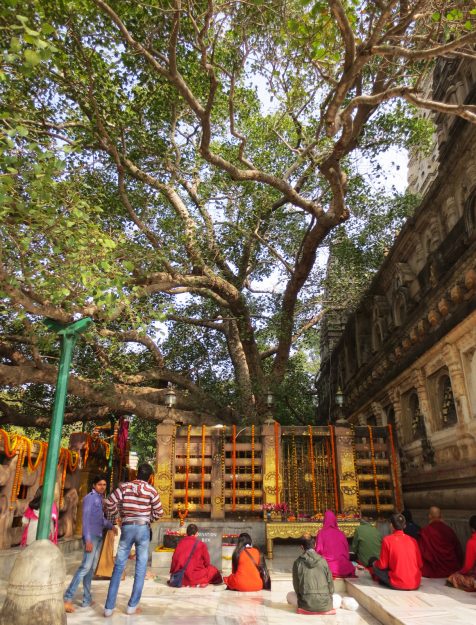
Do you have a regular meditation practice? I do Transcendental Meditation because I see it as a practical thing that gives me energy and it’s only 20 minutes. But I also do Buddhist meditation when I can take more time. I’ve done all-day retreats. I love both. I remember a few years ago I had a chance to talk to [meditation teacher] Ajahn Brahm and I asked him about Transcendental Meditation and said, “I practice it every day. Is that OK?” He said, “That’s fine, if that works for you.” Then he stopped and looked at me and said, “However, learn Buddhist meditation as well. Then you have two different tools instead of one.”
Travel remains difficult for most of the world due to the pandemic. What do you suggest to people whose ability to embark on a pilgrimage is limited these days? What I’m trying to do is make the most of it, to take advantage of it, and to use it as an excuse to think about things a little bit differently. Of course I miss traveling a lot but at the same time, I had time for this book and for reading. I walk more around where I live. There is a good side to this as well.
And you can read my book! Or anything about Buddhists sites in India and Asia. And start planning. Everything is impermanent right?
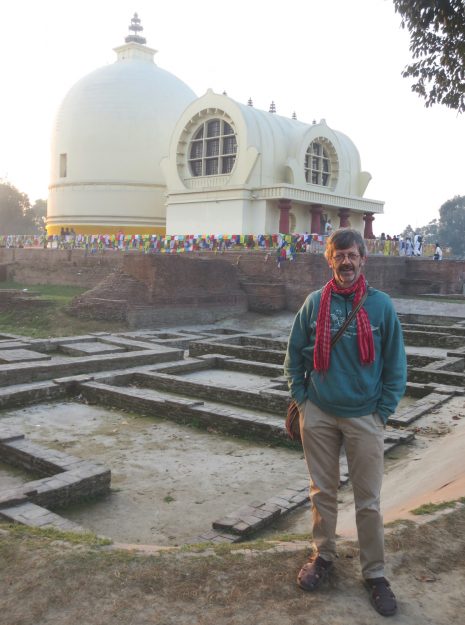
Do you think you’ll stay in Asia or return home to Italy or somewhere else one day? I wouldn’t mind finding somewhere else in Asia or if I had the chance to go to Europe either and try to do something for Buddhism. There are a thousand different spiritual paths and that’s fine, but I would be happy if people knew a little bit more about Buddhism because I think it can give so much to society and to the world. It has to me. I think if everybody followed even the very basic five Theravada precepts , I think we would live in a different world. The very fact that Buddhism tells you that you should not base your happiness on your material things, on possessing or attachment, if that was put into practice in some way, it would change society.
To learn more about Buddhism and pilgrimage, read about why Buddhists go on pilgrimage , the four sacred sites of Buddhism , the climate threat to Buddhism’s holy sites , and an interview with Stephen Batchelor on his book , Confession of a Buddhist Atheist , which is all about pilgrimage.
Thank you for subscribing to Tricycle! As a nonprofit, we depend on readers like you to keep Buddhist teachings and practices widely available.
Subscribe now to read this article and get immediate access to everything else.
Already a subscriber? Log in .
Subscribe Today
Tricycle is more than a magazine.
Subscribe for access to video teachings, monthly films, e-books, and our 30-year archive.
Weekly Newsletter
The latest from tricycle to your inbox and more.
Please check your email to confirm your subscription.
Would you like to sign up for our other mailing lists?
- The Tricycle Newsletter A weekly update on everything you need to know on tricycle.org
- Three Teachings Buddhist teachings to your inbox every Thursday
- Daily Dharma Morning wisdom to wake you up
- Learn More Course announcements, offers, and events from our partners
- Meditation Month Weekly updates and guided meditations from a Buddhist teacher throughout the month of March
By continuing, you agree to Tricycle’s Privacy Policy and Terms of Service .
Help us share Buddhist teachings
Tricycle is a nonprofit that depends on reader support.
- Airport Transfer
- Government Travel Booking
- Square Miles
- Travel Blog
- Corporate Profile
- Sutra Franchise
- Airport Transfers
- KLIA Ekspres
- Express Bus Tickets
- Business Travel Solution
- Government Travel Solution
- Travel Insurance
- Visa Services
- Money Exchange
- Translators
- Entertainment Tickets
- SMEBizTravel Old
- Government Travel
- Travel Videos
- PR Newswire
- GovBizTravel
- CorporateBizTravel
- SMEBizTravel
- B2BTravelSolution
- Student Travel
- Travel News

8 places around the world for Buddhist pilgrimages

Rays of light bounced off sandstone walls, casting delicate shadows on the intricately designed bas-relief.
It was New Year’s eve and there I was at Angkor Wat in Siem Reap, Cambodia, with a friend.
We climbed up steps hewn in the massive sandstone structure till we reached the top. There, we sat and waited for the sun to set. As glorious golden light flooded the temple complex, a group of Buddhist monks in saffron-coloured robes walked past.
Not only is Angkor Wat the largest religious monument in the world and a popular site for international tourists, it is also a place that Buddhists go to for pilgrimage.
In fact, as I discovered on the Internet, there are several places where Buddhists go to on pilgrimage. These are associated with the life and teachings of Gautama Buddha, the founder of Buddhism.
The earliest places were where he was born, received enlightenment ( bodhi in the Pali language), taught, and died. Later, other places of pilgrimage were added. This was because after Buddha’s death, his body was collected from the funeral pyre and divided into eight parts. The relics were distributed to different locations, and stupas were erected there. For both Mahayana and Theravada Buddhists, the practice of pilgrimage might have started with visits to these sites, as it was believed to be advantageous in purifying themselves of bad karma, attaining rebirth, and also honouring their master.
Although there may be many places for Buddhists to go on pilgrimage, here are eight of them since this is a significant number in Buddhism, in view of the eight-fold path (of right view or understanding, right thought or attitude, right speech, right action, right livelihood, right effort or diligence, right mindfulness, and right contemplation); Buddha’s birthday being celebrated on the eighth day of the fourth month in the lunar calendar; Bodhi Day being celebrated on the eighth day of the 12th month in the lunar calendar; and on Dec 8 in Japan.

The Maya Devi Temple is located in Lumbini, a revered pilgrimage site in Nepal where Gautama Buddha was born. Photo: Wikimedia Commons/Rajesh Dulal
1. Lumbini, Nepal
Lumbini, a revered pilgrimage site in Nepal, is said to be the birthplace of Buddha. Here, Queen Mayadevi gave birth to Siddhartha Gautama in 563 BCE. Lumbini attained Unesco World Heritage status in 1997. There are a number of temples here, including the Maya Devi Temple; monuments, monastries and a museum (Lumbini International Research Institute); the Puskarini or Holy Pond where Buddha’s mother took the ritual dip before his birth, and where he too had his first bath.
2. Bodh Gaya, India
Bodh Gaya is a pilgrimage site associated with the Mahabodhi Temple in India. It is the place where Buddha is said to have obtained Enlightenment, under what became known as the Bodhi tree. To Buddhists, this is the most important of the main four pilgrimage sites related to the life of Buddha. In 2002, Mahabodhi Temple became a Unesco World Heritage Site.

The Potala Palace in Tibet is a symbol of Tibetan Buddhism and its role in the traditional administration of Tibet. Photo: Wikimedia Commons/Antoine Taveneaux
3. Potala Palace, Tibet
The Potala Palace in Tibet is a symbol of Tibetan Buddhism and its role in the traditional administration of Tibet. Built on Red Mountain in the middle of Lhasa Valley, it was the residence of the Dalai Lama until the 14th Dalai Lama fled to India during the 1959 Tibetan uprising. Thousands of pilgrims from all over the world come yearly to pay homage here. It became a Unesco World Heritage site in 1994.

Located in Anuradhapura, Sri Lanka, Abhayagiriya is one the most sacred Buddhist pilgrimage sites in the nation. Photo: Wikimedia Commons
4. Anuradhapura, Sri Lanka
Anuradhapura, 205km north of Sri Lanka’s capital Colombo, was the centre of Theravada Buddhism for many centuries. The Atamasthana (eight sacred places which Buddha visited during his three visits to Sri Lanka) are located in the ancient kingdom. Today, it is surrounded by 40sqkm of monasteries. It became a Unesco World Heritage Site in 1982.

Shwedagon Pagoda in Yangon, Myanmar, is said to be the most sacred Buddhist pagoda in Myanmar. Photo: Wikimedia Commons/Roger Price
5. Shwedagon Pagoda, Myanmar
Shwedagon Pagoda, also known as the Great Dagon Pagoda and the Golden Pagoda, is a gilded stupa located in Yangon, Myanmar. Located on Singuttara Hill, it is the most sacred Buddhist pagoda in Myanmar, as it is believed to contain relics of the four previous Buddhas of the aeon.

Wat Chom Si Stupa in Luang Prabang, Laos. Photo: Wikimedia Commons/Ondrej Zvacek
6. Luang Prabang, Laos
Luang Prabang, which means Royal Buddha Image, is a city of 58 villages, with 33 belonging to the collective that earned Unesco World Heritage status in 1995. The town is famous for its many Buddhist temples and monasteries. Each morning, hundreds of monks walk through the streets to collect alms. A major landmark is the Wat Chom Si which sits atop a steep hill.

Located 15km from Chiang Mai, Wat Phra That Doi Suthep is a Theravada temple and sacred site to the Thai people. Photo: Wikimedia Commons/Randy Everett
7. Doi Suthep, Thailand
Located 15km from Chiang Mai is Wat Phra That Doi Suthep, a Theravada temple and sacred site for the Thai people. Often referred to as Doi Suthep after the mountain where it’s located, visitors can either climb over 300 steps or take a tram to reach the pagodas. The most holy part of the temple grounds is the original copper-plated stupa. Within the area are pagodas, statues, bells, shrines and a museum. The monastery is said to have been established in 1383 by King Keu Naone to enshrine a piece of bone taken from Buddha’s shoulder.

Yen Tu, the Buddhist capital of Vietnam, is famous for its beautiful landscapes, historical relics and ancient pagodas. Photo: Wikimedia Commons/Thang Nguyen
8. Mount Yen Tu, Vietnam
There is a Vietnamese saying that goes: “You may be charitable and lead a religious life for a hundred years, but if you haven’t made it to Yen Tu, you haven’t reached the highest religious bliss.” Yen Tu, the Buddhist capital of Vietnam, is well known for its beautiful landscapes, historical relics and ancient pagodas. For pilgrims taking the stairs up Yen Tu Mountain to the Dong Pagoda at its peak, the climb has been likened to a stairway to the heavens. After abdicating his throne, King Tran Nhan Tong, the third emperor of the Tran Dynasty, came here to start his new life as a Buddhist monk.
Source: https://www.star2.com/ travel/malaysia/world/2016/05/ 22/8-places-around-the-world- for-buddhist-pilgrimages/
You might also like

Malaysia is getting more visitors from China and India

Mystical ancient city of Bagan is mesmerising


5 places in Asia for a quick romantic getaway
Sri Sutra Travel Agency based in Kuala Lumpur is an award-winning group in business and leisure travel. And by that, it fully understands that both modes of travel require a different set of disciplines, service levels, experience, and the convenience of technology assisted innovation.
Established in 1988, Sri Sutra Travel has grown to become one of Malaysia’s leading travel consultancies. With a dedicated, experienced and committed team, it has successfully garnered an extensive market reach in the travel services sector, both locally and abroad. Located in the heart of the city; Pekeliling Business Centre, Kuala Lumpur.
As a reputable travel agent in Malaysia, Sri Sutra Travel is strategically placed to work in-tandem with your desires, and continues offering the best in travel and tourism products including travel and tour package, hotel booking and other services.
Uncategorized
- Know about the travelling guidance and requirements... September 10, 2021

Connect to Us

Contact Info
03-4026 6600 / 03-4026 6677
No.22A, Persiaran 65C, Pekeliling Business Centre, Off Jalan Pahang Barat 53000 Kuala Lumpur, Malaysia
Our operating hours is daily from 8:45am – 6:00pm except on Saturday, Sunday and public holiday.
How would you like to continue?
Activate your very own Buddha Air account and get benefited:
- Be the first to receive new offers and discounts
- View your saved flight details and schedules
- Have your preferences pre-filled during booking and payment

- Ticket Status
- Flight Routes
popular Search
- Flight Status
- Destinations
Safe PAAS to Travel
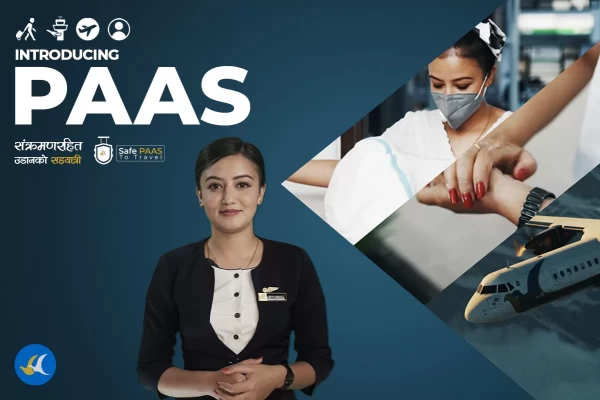
Your safety is our number one priority, therefore, to ensure your wellbeing Buddha Air has launched " Safe PAAS to Travel ", a new protocol against COVID-19 while you are travelling with us. In these unprecedented periods of the pandemic with the frightening surge of coronavirus cases in the capital and elsewhere in the nation, we believe our "Safe PAAS to Travel" can add more to your safety and well-being.
What is Safe PAAS to Travel?
Safe PAAS to travel is the acronym for Passenger – Airport – Aircraft – Staff where you can find detail information regarding Buddha Air Safety Protocol against COVID-19. Our dedicated teams are working closely to enforce PAAS and stand by your side during the critical hours of a pandemic.
P : Passenger's safety during travel.
A : Airport disinfection for better sterility.
A : Aircraft Disinfecting Procedure.
S : Staff guidelines against COVID-19.
Just to ensure our passengers, all our protocols against COVID-19 are as per International Air Transport Association (IATA), Civil Aviation Authority of Nepal (CAAN) and World Health Organization (WHO) Advisory.
Passenger 's Safety during Travel
- For the protection of self and others, all passengers should wear a clean mask.
- Mandatory distance between Buddha Air staffs and the passenger should be maintained not less than one meter.
- Your movement inside the aircraft will not be permitted so passengers must use the lavatory before boarding a flight.
- The temperature of each passenger will be taken and provided with a face shield.
- No-carry policy for any passengers having ARS (Acute Respiratory Syndrome) or respiratory ailments during the Covid-19 outbreak.
Airport Disinfection for Better Sterility
- Baggage Trolleys will be sprayed with disinfection twice a day before work start and at midday.
- Transport vans, ramp buses, and vans will be sanitized after every use.
- Sanitization of the places that are frequently touched like door handles and railings will be sanitized in every 30 minutes.
- Instrument Panel, Switches for Operation of GSE, Railings of various trestles will be frequently sanitized.
Aircraft Disinfecting Procedure
- Approved disinfectant shall be used labelled with "Instruction for Use" and "Safety Precautions."
- Aircraft disinfection process will be carried in the after each flight and at the end of the day's flight.
- Frequently touched surfaces will be rubbed using rags soaked with disinfectant.
- Aircraft disinfection will be carried in the after each flight and at the end of the day's flight.
- All disposable protective equipment will be dumped in a double waste bags for disposal after accomplishing the disinfecting procedure.
Staff Guidelines against COVID-19
- Mandatory wearing of clean mask covering mouth and nose should be strictly followed.
- Cabin Crews must avoid close contact with passengers and their baggage, which will also be pre-informed to the passengers.
- Staffs should be aware of social distancing in and outside the office. It is also requested to avoid unnecessary communal involvement that increases the risk of exposure.
- Staffs are requested to stay home in case of any health affliction with symptoms that resembles coronavirus and be so until completely cured.
- Mandatory check of temperature and sanitization of hands will be new protocol from now to enter Buddha Air offices and other premises.
We are concern for your wellbeing; however, the battle against the coronavirus pandemic can only be won if our valued passengers adore our safety protocol. Our frontliners are heartily dedicated to serving you with the best. Therefore, we expect all our passengers to bear the responsibility of being informed and heed travel protocols for everyone's safety.

Visit Italy
Visit japan, visit france, visit muktinath darshan, schengen visa, namaste & welcome gautam buddha travels.
At Gautam Buddha Travels, we are passionate about providing extraordinary travel experiences that encompass the essence of the majestic Himalayan region. We understand that travel is not just about visiting destinations; it’s about immersing yourself in the rich culture, exploring breathtaking landscapes, and creating lifelong memories. Our company takes its name from Gautam Buddha, the enlightened spiritual leader who walked the very paths we now offer to our esteemed travelers. Inspired by his teachings of peace, compassion, and mindfulness, we aim to create transformative journeys that connect individuals with nature, spirituality, and the local communities.
With a deep-rooted love for the Himalayas, our team of experienced professionals meticulously crafts unique itineraries that showcase the hidden treasures of this enchanting region. Whether you are seeking a spiritual pilgrimage to ancient monasteries, a thrilling adventure amidst towering peaks, or a serene retreat to rejuvenate your mind, body, and soul, we have the perfect journey for you.
We believe in responsible and sustainable travel practices, and we strive to leave a positive impact on the places we visit. We work closely with local communities, ensuring that our tours promote cultural preservation, environmental conservation, and socioeconomic development. By choosing Gautam Buddha Travels, you can be confident that your travels contribute to the well-being of the Himalayan region and its people.
Tours Featured Package
Best selling tours, classical nepal tour, nepal family tour, best of nepal tour, why travel with gbt, safety and well-being.

Your safety and well-being are our top priorities. We work with reputable and reliable service providers, ensuring that all activities and accommodations meet the highest safety standards. Our experienced guides are trained in first aid and equipped to handle any unforeseen circumstances, providing you with peace of mind throughout your journey.
Flexibility and Customer Support

We understand that travel plans can change, and unexpected situations may arise. We offer flexibility in our booking and cancellation policies to accommodate your needs. Additionally, our dedicated customer support team is available to assist you throughout your trip, addressing any queries or concerns promptly and efficiently.
Quality Service

We prioritize the satisfaction and comfort of our clients. From the moment you contact us until the end of your trip, we strive to provide exceptional service and attention to detail. We handle all aspects of your travel arrangements, including transportation, accommodation, activities, and guides, ensuring a hassle-free and enjoyable experience.
Local Connections and Authentic Experiences

Through our extensive network of local partners and guides, we can offer you authentic experiences that showcase the culture, traditions, and natural beauty of the destinations you visit. We believe in supporting local communities and promoting sustainable tourism practices, allowing you to immerse yourself in the local way of life and make meaningful connections.
Customized Itineraries

We understand that every traveler is unique, with different preferences and interests. That’s why we offer personalized itineraries tailored to your specific needs. Whether you’re seeking cultural immersion, adventurous activities, or relaxation, we can customize the perfect itinerary to match your desires, ensuring a truly memorable journey.
Expertise and Experience

We have been operating in the travel industry since [insert year], accumulating extensive knowledge and experience in organizing tours and ensuring customer satisfaction. Our team consists of travel professionals who are well-versed in the destinations we offer, enabling us to provide you with valuable insights, expert guidance, and a seamless travel experience.
Chandragiri Hill Cable Car Tour
Bhaktapur durbar square tour, chitwan day tour, lumbini day tour, pokhara day tour, kathmandu day tour, gust testimonials.

“I can’t express enough how grateful I am for the incredible journey organized by Gautam Buddha Travels. The knowledgeable guides, comfortable accommodations, and seamless logistics made my trip stress-free and enjoyable. I learned so much about Gautam Buddha’s life and teachings while immersing myself in the rich culture and breathtaking landscapes of Nepal. Thank you, Gautam Buddha Travels, for an exceptional travel experience!”

“Traveling with Gautam Buddha Travels was an absolute delight. Their attention to detail, exceptional guides, and well-curated itinerary made my trip to Nepal an unforgettable experience. From exploring ancient temples to meditating in serene surroundings, every moment was filled with spiritual growth and cultural immersion. I highly recommend Gautam Buddha Travels to anyone seeking a transformative journey.”
“Gautam Buddha Travels exceeded my expectations in every way. The attention to detail, personalized service, and seamless coordination made my trip to Nepal truly unforgettable. I was able to delve into the spiritual essence of Gautam Buddha’s birthplace with knowledgeable guides who shared profound insights. I wholeheartedly recommend Gautam Buddha Travels for a transformative and immersive travel experience.”
“Traveling with Gautam Buddha Travels was an enlightening experience. Their well-planned itinerary allowed me to explore the birthplace of Gautam Buddha in a meaningful way. The knowledgeable guides provided deep insights into the spiritual and historical significance of the sites. I felt safe, comfortable, and well taken care of throughout the journey. I highly recommend Gautam Buddha Travels for an immersive and culturally enriching travel experience.”
“I had the privilege of embarking on a journey with Gautam Buddha Travels, and it was a life-changing experience. The meticulous planning, exceptional service, and genuine care of the team made me feel like a VIP throughout the trip. I discovered the beauty, spirituality, and rich heritage of Gautam Buddha’s birthplace with expert guides who brought the history to life. Gautam Buddha Travels truly goes above and beyond to create unforgettable travel experiences.”
WE ARE AFFILIATED
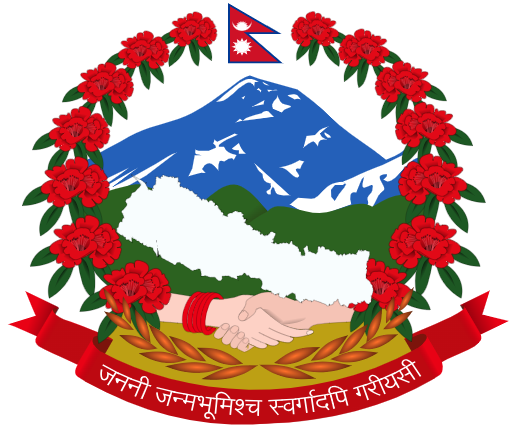
Registered with: Company Registration Office, Government of Nepal
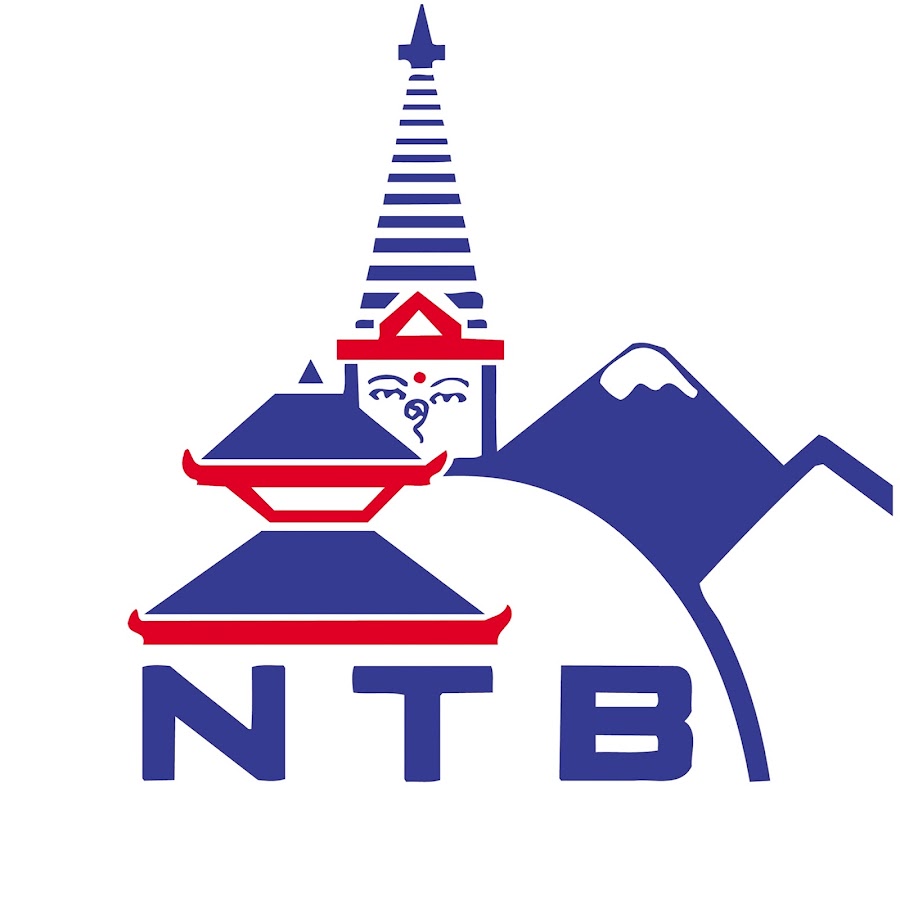
Licensed by: Nepal Tourism Board & Department of Tourism

Proud Member of Trekking Agencies Association of Nepal

General Member of Nepal Mountaineering Association
- Company Profile
- Testimonials
- Terms & Conditions
Tours in Nepal
Best of Nepal Tour Classical Nepal Tour Nepal Family Tour Kathmandu Valley Trek
Contact Us Details
Payment method.

Is It Safe in Moscow?
:max_bytes(150000):strip_icc():format(webp)/RussianKerry2-56a39e8d5f9b58b7d0d2ca8c.jpg)
Stanislav Solntsev / Getty Images
When you visit Moscow , Russia, you’re seeing one of the world’s largest, and most expensive, capital cities . While there is a history of violent crime against foreign journalists and aid personnel in Russia, a trip to Moscow is usually safe for mainstream travelers. Most tourists in Moscow only face potential issues with petty crime, though terrorism is also a concern. Visitors should stick to the principal tourist areas and abide by the local security advice.
Travel Advisories
- The U.S. Department of State urges travelers to avoid travel to Russia because of COVID-19 and to "exercise increased caution due to terrorism, harassment, and the arbitrary enforcement of local laws."
- Anyone exploring more of Russia should avoid "The North Caucasus, including Chechnya and Mount Elbrus, due to terrorism, kidnapping, and risk of civil unrest." Also, travelers should stay away from "Crimea due to Russia’s occupation of the Ukrainian territory and abuses by its occupying authorities."
- Canada states travelers should use a high degree of caution in Russia due to the threat of terrorism and crime.
Is Moscow Dangerous?
The Moscow city center is typically safe. In general, the closer you are to the Kremlin , the better. Travelers mainly need to be aware of their surroundings and look out for petty crime. Be especially careful in tourist areas such as Arbat Street and crowded places like the Moscow Metro transit system. The suburbs are also generally fine, though it is advised to stay away from Maryino and Perovo districts.
Terrorism has occurred in the Moscow area, leading authorities to increase security measures. Be more careful at tourist and transportation hubs, places of worship, government buildings, schools, airports, crowds, open markets, and additional tourist sites.
Pickpockets and purse snatching happen often in Russia, perpetrated by groups of children and teenagers who distract tourists to get their wallets and credit cards. Beware of people asking you for help, who then trick you into their scheme. Don’t expect a backpack to be a safe bag bet; instead, invest in something that you can clutch close to your body or purchase a money belt . Always diversify, storing some money in a separate location so that if you are pickpocketed, you'll have cash elsewhere. Keep an eye out for thieves in public transportation, underground walkways, tourist spots, restaurants, hotel rooms and homes, restaurants, and markets.
Is Moscow Safe for Solo Travelers?
Large cities like Moscow in Russia are overall fairly safe if you are traveling alone, and the Moscow Metro public transit is a secure and easy way to get around. But it is still a good idea to follow basic precautions as in any destination. Avoid exploring alone at night, especially in bad areas. You may want to learn some basic Russian phrases or bring a dictionary, as many locals don't speak English. However, in case you need any help, there are tourist police that speak English. Also, exploring with other trusted travelers and locals or on professional tours is often a good way to feel safe.
Is Moscow Safe for Female Travelers?
Catcalling and street harassment are infrequent in Moscow and the rest of Russia and females traveling alone don't usually have problems. There are plenty of police officers on the streets as well. Still, it serves to stick to Moscow's well-lit, public areas, avoid solo night walks, and use your instincts. Women frequenting bars may take receive some friendly attention. Females can wear whatever they want, but those entering Orthodox churches will be required to cover up. Though women in Russia are independent, domestic violence and other inequality issues take place regularly.
Safety Tips for LGBTQ+ Travelers
Russia is not known as a gay-friendly country. However, Moscow is one of the more welcoming cities with a blooming LGBTQ+ community and many friendly restaurants, bars, clubs, and other venues. Hate crimes in Russia have increased since the 2013 anti-gay propaganda law. Openly LGBTQ+ tourists in this conservative country may experience homophobic remarks, discrimination, or even violence, especially if traveling with a partner. Also, while women hold hands or hug publicly—whether romantically involved or not—men should avoid public displays of affection to prevent being insulted or other issues.
Safety Tips for BIPOC Travelers
Moscow and other big cities in Russia have sizable populations of various cultures, so discrimination against BIPOC travelers is rarer than in other parts of the country where it can become dangerous. Some people living in Russia who are Black, Asian, Jewish, and from other backgrounds have experienced racial discrimination and violence. Tourists won't usually experience overt racism but may be the recipients of some stares. If anyone should bother you, be polite and resist being taunted into physically defending yourself.
Safety Tips for Travelers
Travelers should consider the following general tips when visiting:
- It's best not to drink the tap water. If you do, boil it before drinking, though showering is safe and the amount used to brush teeth is generally not harmful. Mineral water is widely drunk, especially at restaurants, and if you prefer not to have it carbonated ask for “ voda byez gaz” (water without gas).
- If you need emergency assistance in case of fire, terrorism, medical issues, or more, dial 112 in Russia for bilingual operators.
- Be judicious about taking photographs, especially of police or officials. This can potentially bring unwanted attention to yourself by members of law enforcement who won’t mind asking to see your passport. Also avoid snapping photos of official-looking buildings, such as embassies and government headquarters.
- Carry your passport in as secure a manner as possible. If you get stopped for any reason by the police, they can fine or arrest you if you don't have the document with you. Also, keep photocopies of your passport, the page on which your travel visa appears, and any other documents that relate to your stay in Russia.
- Use official taxis only and steer clear of illegal taxi companies, especially at night. Ask your hotel to call a reputable taxi company.
U.S. Department of State. " Russia Travel Advisory ." August 6, 2020.
Government of Canada. " Official Global Travel Advisories ." November 19, 2020.
Is It Safe in Peru?
Is It Safe in Guatemala?
Is It Safe in Rio de Janeiro?
Is It Safe in Barbados?
Is It Safe in Egypt?
Is It Safe in Sweden?
Is It Safe in Colombia?
Is It Safe in Jamaica?
Is It Safe in Germany?
Is It Safe in London?
Is It Safe in Mexico?
Is It Safe in Iceland?
Is It Safe in Russia?
Is It Safe in Vancouver?
Is It Safe in Thailand?
Is It Safe in Amsterdam?
2018 Primetime Emmy & James Beard Award Winner
R&K Insider
Join our newsletter to get exclusives on where our correspondents travel, what they eat, where they stay. Free to sign up.
A History of Moscow in 13 Dishes
Featured city guides.
- United Arab Emirates
- Switzerland
- The Netherlands
- Puerto Rico
- United States
- New Zealand
- ➨ Choose from World Map
- Budget Travel
- Family Travel
- Getting Around
- Visas & Passports
- Work with Us
Browsing Category
- Czech Republic
- Saint Martin
- Uncategorized

Moscow Travel Guide: Best Things to Do + More [2023]
· everything to know about visiting moscow, including the best things to do and how to get around. ·.

Moscow is Russia’s vibrant capital city, and it also happens to be the largest city in all of Europe. The city’s long and infamous history makes it one of the most unique places we have ever visited.
The architecture ranges from centuries-old palaces to uniform, gray concrete buildings. The people range from cold and private to warm and welcoming. Moscow is a city is strong juxtapositions, and we learned a lot during our time there.
This post will break down all you need to know about visiting Moscow, including the best things to do, how to get there, how to get around, and more.

The Best Things to Do in Moscow
1. explore the red square.
The Red Square is the heart of Moscow. Most of the city’s top attractions can be found here, including just about everything on this list. The Kremlin, St. Basil’s Cathedral, and Lenin’s Mausoleum are all located here, and the State Historical Museum and GUM are not far from here, either.
The Red Square is a common home for parades, protests, and seasonal celebrations. There are massive Christmas celebrations here, with food vendors and carnival rides set up in numbers.

2. Check Out the Ziferblat
The Ziferblat is a café in Moscow that is unlike any café we have ever been to. While most cafes charge you for your drinks and food, the Ziferblat charges you for your time.
Upon arrival, you are given a clock. When you leave, the barista calculates how much time you spent in the café and charges you accordingly. This concept was created to help visitors to be more intentional with their time, and the cafe itself is incredibly charming.
For a detailed look at everything you need to know before you visit, make sure you read my post about visiting the Ziferblat Cafe in Moscow .

3. Marvel at St. Basil’s Cathedral
St. Basil’s Cathedral is one of the most iconic churches in the world, and it was the single thing we were most excited to see while in Moscow. Built almost 500 years ago, St. Basil’s Cathedral is recognized by its colorful domes and whimsical style. The church is of the Russian Orthodox faith, and the inside is just as wondrous as the outside.
St. Basil’s Cathedral is located on the edge of the Red Square, making it incredibly convenient to visit. Entrance for non-worshippers costs 800 rubles, and tickets can be bought at the church

4. Explore the Kremlin
The Kremlin is the largest active fortress in Europe, and it is the site of most of Russia’s government affairs. In addition to government buildings, the Kremlin Complex is filled with courtyards, towers, and museums that are open to the public. If you have the time, you could spend a couple of days fully exploring all that there is to see in the Kremlin.

5. Walk Through Lenin’s Mausoleum
Vladimir Lenin is one of the most important figures in Russian history, and his body is located perfectly embalmed in a mausoleum in the Red Square. The Mausoleum is open to the public to visit, and as long as you are willing to go through a few security checks, it is easily one of the best things to do in Moscow. Its convenient location in the Red Square makes it a can’t miss attraction.
There is absolutely no photography allowed inside the Mausoleum. Do not test this rule.

6. Wander Along Arbat Street
The Arbat is a very popular street in Moscow that is lined with stores, cafes, and other touristy attractions. It is one of the oldest streets in the city, dating back to the 1400s. This street is both quaint and trendy, and there are many walking tours that introduce tourists to the neighborhood’s wonders and highlights.

7. Catch a Show at the Bolshoi Theatre
As a lover of the arts, it is hard to think of Moscow and not think of ballet. Russia has always been a top dog in the world of fine arts, and Bolshoi Theater is one of the best places to catch a performance. We were lucky enough to attend an Opera here, and it is a venue that you don’t want to miss out on if you enjoy opera, ballet, or orchestral performances.
8. Visit the State Historical Museum
The State Historical Museum is one of the most respected museums in Moscow. Despite its name, it is not really focused on the history of Russia as a nation. Rather, it contains a collection of artifacts from all throughout Russia’s history.
The museum’s collection is very broad in nature. It houses some items from indigenous tribes that used to occupy the region, pieces collected by the Romanov family, and more.
9. Wander Around GUM
GUM is an absolutely massive mall within walking distance of the Red Square. It isn’t just the size that draws visitors here; it’s the sense of luxury. The mall is so beautiful inside, much like the metro stations.
While visiting a mall might not sound like it belongs on a bucket list, this mall does. You will not want to miss out on visiting GUM while in Moscow.

10. Admire the Cathedral of Christ the Saviour
While St. Basil’s Cathedral is the most iconic church in Moscow, it isn’t the only one. The Cathedral of Christ the Saviour is absolutely stunning, with massive golden domes. It is the tallest Orthodox church in the world, and it is the seat of the Orthodox Patriarch of Moscow.
It is located just about a mile from the Red Square, just south of the Kremlin Complex. You can walk to it from the Red Square in about 20 minutes.
How to Get to Moscow
Flying to moscow.
Moscow has three major international airports: Sheremetyevo (SVO) , Domodedovo (DMO) , and Vnukovo (VKO) . All three of them are directly connected to downtown Moscow by the Aeroexpress trains, which leave every 30 minutes throughout the day. By Aeroexpress train, you can expect to get to the city center in 25-45 minutes depending on the airport that you fly into.
Sheremetyevo is the biggest and busiest of the three airports, and it is the one you are most likely to fly into – especially if you are coming from outside of Europe or the Caucus region. We flew into Sheremetyevo on a direct flight from New York City.
I usually provide backup airport options, because flying right into the city isn’t always the cheapest way to get where you’re going. Unfortunately, when it comes to Moscow, don’t really have a choice other than to fly right into Moscow. It is a very remote city, and it is usually the cheapest place to fly into in Russia as a whole.
Since Sheremetyevo is so busy, you will probably find a great flight option anyway. I wrote in my post about finding cheap flights that using hub airports will lead to more affordable airfare, and the same logic applies here. Even though Russia’s national airline, Aeroflot, is no longer a member of the SkyTeam Alliance, Moscow is still a major hub connecting passengers from all over the world.

READ OUR CHEAT SHEET
Train or Bus to Moscow
Trains and buses are one of the most popular ways to get around Europe. However, they’re of very little use when you’re trying to get to Moscow.
Moscow is hundreds of miles from the nearest major cities. The only major European city that can even be reached within 8 hours on the ground is St. Petersburg, and even the Baltic capitals of Riga, Vilnius, and Tallinn are over 12 hours away.
If you want to get to Moscow, the best option is almost always to fly. While the train routes to Moscow are scenic, they simply take forever.
How to Get Around Moscow
METRO | TROLLEYS | TRAMS | BUSES
Moscow has one of the most memorable metro systems in the world. Its metro lines are very deep underground, and the stations are absolutely stunning. Each station has its own unique style, but all of them contain escalators that seem to go on forever.

The system was built in an effort to showcase the power of the Soviet Union and its bright future. The plans were a form of propaganda, but they resulted in what is still one of the most visually appealing subway systems on earth.
Moscow’s metro system isn’t just pretty. It is also very useful and accessible. The system has 17 lines that connect the city and its surrounding area.
But wait; there’s more!
The Moscow metro system is also incredibly affordable, with each ride costing less than a dollar. The metro is by far the best way to get around Moscow, as it is almost impossible to beat the connection times and the low cost to ride.
Tickets can be bought at electronic, English-speaking kiosks in stations, or directly from ticket counters at certain larger stations. There are also day passes available, which are a very solid option if you plan on riding the metro several times per day.

The metro is by far the best way to get around Moscow.
In addition to the metro system, Moscow also has a network of buses, trams, and trolleys. This system is nowhere near as convenient or well-connected as the metro, though, and is likely of little use to you during your trip. There is no Uber in Moscow, but a similar app named Yandex is available if you need a ride in a pinch.
How Many Days Do You Need in Moscow?
Moscow is the biggest city in all of Europe, and it is absolutely loaded with things to do. You could spend weeks in Moscow and still find new things to do. Of course, most travelers don’t have that kind of time to spend in one place!
I recommend spending no less than three full days in Moscow, and ideally closer to five or seven.
Moscow is very spread out, and it can take some time to get from one major point to another. There are also so many places that are nice to just sit back and relax, which is hard to do when you’re in a hurry trying to cram activities into just a few days.
If you only have a week to visit Russia, I’d advise spending all of the time in one city. If you decide to split your time between Moscow and St. Petersburg, I recommend not trying to squeeze in any day trips beyond those two cities.

When Is the Best Time of the Year to Visit Moscow?
There are two different ways to approach this question. Personally, I think the best time to visit Moscow is around Christmas and New Year’s Day. While the weather will be absolutely freezing, Moscow is a surreal winter wonderland in December and January.
We were in Moscow right before Christmas. While it was very cold, you can always bundle up. Exploring the Christmas markets and pop-up ice skating rinks throughout Moscow is one of my favorite memories from anywhere I’ve traveled, and I dream of going back to do it again.
If you aren’t fond of the cold, Moscow is beautiful in the summer. It tends to get pretty cold in the shoulder seasons, so if you want warm weather, you should plan to visit in the summer. Moscow actually gets pretty warm in July and August, and there are a bunch of fantastic places to soak up the sun within the city.
The best time to visit Moscow is either around Christmas or from late May to August.

Is Moscow Safe to Visit?
While Moscow is a truly wonderful city, there’s no denying that visiting Russia comes with risks. As the country is run by an infamous communist dictator, concerns about visiting are valid. While we didn’t experience any sort of threat or negative treatment during our time in Moscow, we visited in a peaceful time.
In our experience, Russia doesn’t seem to detain normal Americans or Westerners to use as pawns. As a regular person, as long as you don’t commit any crimes, there is a slim chance you will run into any issues. However, Russia will not hesitate to enforce its laws against foreigners, and illegal behaviors will likely land you in a very compromising position.
Russia will not hesitate to enforce its laws against foreigners, and illegal behaviors will likely land you in a very compromising position.
To make matters worse, Russia has a bad reputation for gang violence. While the Russian mafia has very little interest in normal Western tourists, they won’t hesitate to pick a fight with anyone who ventures into their sphere of influence. If you seek out illegal substances or activities, you could be a target of the mafia.
If you seek out illegal substances or activities, you could be a target of the mafia.
Finally, since Russia’s invasion of Ukraine, things are all very different. Russia is currently at war, and there are battles raging within 8 hours of Moscow. While it is still relatively safe to visit, that could change at any time as the war with Ukraine continues.
Is Moscow Worth Visiting?
Without a doubt, Moscow is worth visiting. It is one of the most unique major cities we have ever visited, and we hope to make it back one day. The Russian Orthodox churches are stunning, the city’s history is unlike any other, and the food is to die for.
While many visitors prefer St. Petersburg to Moscow, I think Moscow deserves a lot of hype of its own. Moscow is the beating heart of Russian culture and history, and it’s a place I highly recommend checking out if you have the chance.

That’s all we have for you about Moscow! I hope this post was helpful as you plan your trip to Russia’s capital.
Have you been to Moscow? Or is this your first time visiting? Comment below if you have anything to add to our travel guide!
Hi, I'm Greg. I'm an avid traveler who has traveled to over 50 countries all around the world with my wife and kids. I've lived in Italy, Mexico, China, and the United States, and I dream of moving abroad again in the future. With this blog, I provide my audience with detailed destination guides to my favorite places and pro-tips to make travel as stress-free as possible.
Leave a comment
Save my name, email, and website in this browser for the next time I comment.
Meet The Author - Greg

Recent Post

How Much Does a Trip to Egypt Cost: Budget Breakdown
March 10, 2024

Best Time to Visit the India Gate in Delhi [2024]
March 1, 2024

Flying with a Sinus Infection: Tips to Avoid Pain
February 20, 2024

11 Best Things to Do in Breckenridge Besides Skiing
February 12, 2024

10 Best Beaches in Mexico for Families (We Lived Here)
February 3, 2024


COMMENTS
Safe Travel Buddha (1 - 22 of 22 results) Price ($) Any price Under $25 $25 to $75 $75 to $100 ... Cream Travel Buddha keychain, birthday gift idea for a friend, lucky buddha keyring, good luck charm, personalised, Travel gift bag charm (3.9k) $ 5.34. Add to Favorites ...
2. Learn to let go. "You only lose what you cling to," said the Buddha. If you don't try to possess a thing, you cannot lose it and it makes it forever yours. To let go is an art that will improve your whole life, whether it be with relationships, friends, possessions or jobs.
The most popular statue is of the Money Bags Traveling Buddha. Among his valuable possessions as he wanders about the country is a Wu Lou. This hourglass-shaped gourd is the bearer of healing, long life and overall good health. The ideal placement is the east (health) sector. You can also place it in the east to boost the eldest son's all ...
The Buddha is often described as travelling with 500 monks, a conventional number meaning 'many,' or simply with 'a large group of monks.'. At other times, without informing his attendant and companions, he would go off and wander by himself for a while (S.III,95). It seems that he went everywhere by foot except for when he had to cross ...
Safe travel charms are small objects imbued with protective or symbolic qualities. Some people believe to carry Safe travel charms, with them when embarking on journeys. According to their beliefs, these charms are carried to offer protection, luck, and safeguard travelers from various dangers, accidents, or misfortunes that might occur during ...
A Safe Travels Buddha is believed to bring luck, happiness, and safety to anyone who travels. He is also believed to encourage travel in the life of those who desire it. So regardless of if you travel all the time or just wish you traveled a little more, this Buddha is sure to be a great addition to your life. Approximately 2 inches tall.
Safe Travels Buddha. Stands 100 mm high. Weighs 312 grams. Hotei means cotton-sack and symbolizes Buddha as a travelling monk. Safe Travels Buddha. The Safe Travels Buddha is an old-fashioned rendition. Here he is carrying a stick with a bundle tied to the end of it thrown over his right shoulder. This variations includes him holding a plate in ...
A traveler's guide to Bodh Gaya, the site of the Buddha's Awakening. Bodh Gaya is Buddhism's Mecca, Vatican, and Wailing Wall. Among the eight great Buddhist pilgrimage sites in India, Bodh Gaya is the most visited. But unlike the holy places of those other faiths, the great center of the Buddhist world revolves around not a building or a ...
These are my guiding questions in Journeys of Transformation: Searching for No-Self in Western Buddhist Travel Narratives. Since the 1970s, dozens of autobiographical stories have described treks in Tibet, periods of residence in a Zen monastery, pilgrimages to Buddhist sites and teachers, and other Asian journeys.
Cream Travel Buddha keychain, birthday gift idea for a friend, lucky buddha keyring, good luck charm, personalised, Travel gift bag charm. (4.1k) $5.27. Beautiful Mini Brass Pocket/Travel Kwan Yin. 2" x 3/4" Thoughtful Unisex Gift in Pretty Gift Bag. Zen, Buddhism.
For the last two years, Tricycle's "Buddhist Traveler in …" series has recommended visits to dharma-related haunts in different corners of the globe—from a Vancouver bookstore to a Bön stupa in a tropical pine forest outside Mexico City to a repository of precious Mahayana manuscripts in Kathmandu. The COVID- 19 pandemic has disrupted our daily lives, to say the least, and will ...
Following his enlightenment, the Buddha was said to have possessed and discussed several supranormal powers attainable through meditation.Such abilities include walking on water, walking through walls, becoming invisible, levitation, and making copies of himself. The Buddha discusses these abilities in several texts such as the Samaññaphala Sutta (DN 2), Kevatta Sutta (DN 11), Lohicca Sutta ...
He is the author of the recently released Buddhism and Pilgrimage: A Journey to the Four Sites. Alison Spiegel is a writer and contributing editor for Tricycle: The Buddhist Review. In the new book Buddhism and Pilgrimage, author Paolo Coluzzi transports readers to the four sacred sites of Lumbini, Bodhgaya, Sarnath, and Kushinagar.
4. Anuradhapura, Sri Lanka. Anuradhapura, 205km north of Sri Lanka's capital Colombo, was the centre of Theravada Buddhism for many centuries. The Atamasthana (eight sacred places which Buddha visited during his three visits to Sri Lanka) are located in the ancient kingdom. Today, it is surrounded by 40sqkm of monasteries.
We travel along the fertile plains of the Ganges, beautiful with its mustard and lentil fields, to the lush 'terai' that leads to the foothills of the Himalayas. We visit the remains of ancient monasteries and stupas, museums with exquisite art, living temples and villages that have changed little since the time of the Buddha 2,500 years ago.
Safe PAAS to Travel. September 20th, 2020 - 5 min read. Your safety is our number one priority, therefore, to ensure your wellbeing Buddha Air has launched " Safe PAAS to Travel ", a new protocol against COVID-19 while you are travelling with us. In these unprecedented periods of the pandemic with the frightening surge of coronavirus cases in ...
Travel Agents Nepal Buddha Travel.. Discover essential tips for safe and stress-free air travel. Ensure a smooth journey ahead. Skip to content +977 1 4542651 +977 9851 255 665. ... By incorporating these travel safety tips and seeking guidance from a reliable ...
"Traveling with Gautam Buddha Travels was an enlightening experience. Their well-planned itinerary allowed me to explore the birthplace of Gautam Buddha in a meaningful way. The knowledgeable guides provided deep insights into the spiritual and historical significance of the sites. I felt safe, comfortable, and well taken care of throughout ...
Travel Advisories . The U.S. Department of State urges travelers to avoid travel to Russia because of COVID-19 and to "exercise increased caution due to terrorism, harassment, and the arbitrary enforcement of local laws."; Anyone exploring more of Russia should avoid "The North Caucasus, including Chechnya and Mount Elbrus, due to terrorism, kidnapping, and risk of civil unrest."
1: Off-kilter genius at Delicatessen: Brain pâté with kefir butter and young radishes served mezze-style, and the caviar and tartare pizza. Head for Food City. You might think that calling Food City (Фуд Сити), an agriculture depot on the outskirts of Moscow, a "city" would be some kind of hyperbole. It is not.
3. Marvel at St. Basil's Cathedral. St. Basil's Cathedral is one of the most iconic churches in the world, and it was the single thing we were most excited to see while in Moscow. Built almost 500 years ago, St. Basil's Cathedral is recognized by its colorful domes and whimsical style.
Right now, Moscow is not safe to visit due to the ongoing war with Ukraine. The political situation is tenuous, and there have been situations of the government targeting foreign citizens. Although Moscow has a low crime rate, that doesn't mean the city is safe as long as the political situation is the way that it is.